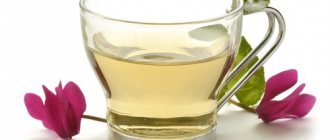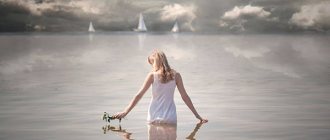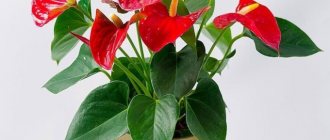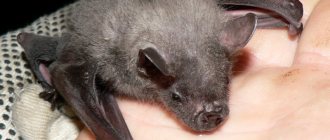Syngonium is a flower, amazing in its beauty and properties, reminiscent of a vine straight from the wild jungle and belongs to the aroid family. Dotted with unusual large leaves, the flower can create a real tropical corner in the apartment.
The plant is represented by 30 species, but humans have tamed only a few of them, which have the most variegated colors. Breeders are not standing still - their plans are to cultivate varietal syngoniums for each species and develop a tricolor variety. Syngonium belongs to poisonous plants, which is perhaps why it is shrouded in a veil of superstition and will accept .
It is difficult to say where and when numerous myths and superstitions around syngonium appeared. Most likely, this amazing flower has been surrounded by legends for decades, and perhaps this happened even before the plant moved into a person’s home. This was influenced by the Chinese teachings of Feng Shui and the fact that the herbal pet has poisonous properties. Despite this, the number of positive superstitions outweighs the skeptics.
Description of the plant
Syngonium is a genus of perennial evergreen climbing plants of the Araceae family.
The tropical forests of South and Central America are the homeland of the plant. In indoor culture, syngonium is grown as a decorative foliage flower. The stems of young vines are green and participate in photosynthesis; over time, the upper layer of shoot cells, within one internode, loses its color. The thickness of the old stem reaches 4–6 cm, at a young age - several millimeters, the average diameter of the branches is 1–2 cm. The stem is unbranched, however, if it is damaged (cut, broken), it can begin to branch. The stems are quite elastic, but when strongly bent, the outer epidermis cracks. In many species, for example, in Syngonium legifolia, a waxy coating forms on the shoots. Under natural conditions, the length of the plant varies between 15–20 m, the diameter of the stem reaches 4–6 cm. When grown indoors, the vine reaches no more than two meters in length, the thickness of the stem reaches 2 cm.
The root system is represented by feeding and scototropic (aerial) roots. Both types are formed below each stem node. With the help of aerial roots, the plant clings to the ground and is supported. At each node, one long feeding root is formed, which serves to provide the plant with the necessary nutrients. Unlike scototropic ones, the feeding root is larger and can extend from the stem at a certain angle.
Many species differ in shape, color and size of the leaf blade. There are heart-shaped, arrow-shaped, spear-shaped and three-lobed leaves. One species can form leaves of various shapes, and if at a young age they have an arrow-shaped shape, then over time their appearance changes, acquiring dissected lobed leaf elements. The color of the leaves is very interesting - monochromatic, with different shades of green, many species have almost chalky leaves. Species with variegated leaves look very impressive; white, yellow, red, pink spots, dots and strokes make the plant highly decorative.
The color saturation and color of the leaves of the syngonium indoor plant changes depending on the lighting. Syngonium blooms quite rarely; the flowers do not represent any aesthetic or decorative value.
Bloom
The Syngonium flower is a green spadix with female and male flowers, a pale pink or red bract in the form of a blanket, almost completely covering the spadix. The shape of the bract resembles a half-unfolded scroll or hood. Male flowers are located in the upper, most part of the cob, female flowers at the base. Syngonium blooms in its natural environment at the end of spring. The flower is characterized by cross-pollination, with the female flowers opening first and the male flowers later. After pollination, cylindrical or ovoid fruits with a rich aroma are formed, containing up to 100 seeds. Birds and animals feed on the fruits, carrying them over long distances.
At home, it is almost impossible to see how the syngonium blooms; the vine blooms only in its natural environment.
What you need to know before you buy syngonium
Try to buy syngonium in specialized flower shops from knowledgeable and experienced sellers. Before choosing a plant based on its appearance, ask a specialist what size the varieties you like grow to.
Think about whether they are suitable for the dimensions of your apartment, whether there is a suitable place for them - spacious and well-lit enough.
Having decided on the choice of species, proceed to a thorough examination of the syngonium. Its trunk and leaves must be clean - without dry or wet rotting spots, without signs of wilting or mechanical damage. There should be no pests on the plant either.
The varieties do not differ much in cost. Prices start from 100 rubles and then depend on the growth and age of the plant. For example, a 20-centimeter copy can be purchased for 200 rubles. A large plant can cost more than 1000 rubles.
If the syngonium is clearly cramped in a store container - the roots are sticking out, the pot is disproportionately small - the plant should be transplanted into a new container. If everything is in order, you can postpone this procedure until spring.
Is it possible to keep Syngonium at home: signs and superstitions about the poisonousness of the plant?
Syngonium is a poisonous plant, like all representatives of the Araceae family. Its milky juice, if it gets on the skin or mucous membranes, can cause severe irritation, and if ingested, lead to poisoning. When working with a flower (transplanting, dividing), it is necessary to use personal protective equipment - rubber gloves. Syngonium can be kept at home, but it is better to choose a place for the flower that is inaccessible to children and animals - high chests of drawers, shelves, hanging flower pots.
Over the entire period of cultivation of the species, it acquired a considerable number of signs and superstitions. Syngonium has a “good” and a “bad” side. Since the liana comes from tropical forests, it reacts to high air humidity by forming small droplets of water at the tips of the leaves. Because of this specific feature, syngonium is called a “weather forecaster”; as soon as drops form on the leaf blades, we can confidently say that rain is approaching. However, the same reaction of the plant indicates excess moisture in the soil.
In the past, syngonium, like all types of lianas, was considered a “husband,” but over time this belief was not confirmed; in fact, such a “negative trait” is just a common prejudice.
According to the ancient Chinese teachings of Feng Shui, the sharp ends of a room, objects, including plants, have a negative, poisonous effect on human life. According to Feng Shui, the sharp ends of the arrow-shaped leaves of syngonium emit “poisonous breath”. However, according to the rules of the teaching, the negative energy of the plant can be neutralized with the help of protective objects, amulets, and talismans located next to the flower pot.
A breathtaking and mysterious syngonium
Syngonium, a native of wet tropical forests, is a rather unpredictable plant, prone to changing its appearance over time.
Depending on the conditions of its maintenance and its age, this greenish favorite can grow like a liana and produce a huge number of aerial roots, or manifest itself as an upright plant.
It also affects syngonium with its leaves. Not only do their colors and color saturation change depending on the lighting, but also the shape of the leaves undergoes many changes as the indoor flower matures and grows. But more often the syngonium captivates its future owners with its beautiful arrow-shaped leaf plates resembling hearts.
As for flowering, Syngonium is quite stingy in flowers when growing outside the wild. It blooms very rarely in the home environment. And if he suddenly deigns to amuse his owner with flowering, he will produce a rather unsightly-looking flower, common to all Aroids, in the shape of a cob, covered with a folded greenish (most often) blanket.
In a word, syngonium is a beautiful and at the same time completely undemanding greenish friend that will decorate the interior of any room, dilute the stuffy atmosphere of a city apartment with a piece of nature and literally will not let its owner get bored.
Types and varieties
The genus has more than 30 species, but in indoor culture the syngonium is represented by only 2–3 species. The varieties of Syngonium with variegated colors - Imperial White, Butterfly and others - have the greatest decorative value. Varietal syngoniums within each species are currently being cultivated and developed. Breeders are faced with the task of obtaining varieties of various types of syngonium that have a tricolor.
Pink spot
Syngonium Pink Spot
The highly decorative variety Syngonium Pink is grown as a vine or bush. The growth rate of the varietal form of Syngonium Pink Spot is above average. When young, the leaves are creamy pink with red or crimson splashes; older leaves turn pale. With prolonged intense lighting, the leaf plates lose their bright color, becoming lighter.
Pink splash
Syngonium Pink Splash
The varietal form of syngonium Pink Splash (Syngonium Pink Splash) is distinguished by dark green leaves with chaotically scattered spots of a creamy-pink hue, of various shapes and sizes.
Aurate or auricular
Syngonium auritum
The leaves are glossy, dark green, with a waxy coating, 6–20 cm long, up to 24 cm wide. The petiole is smooth, the same color as the leaves, 15–40 cm long. The shape of the leaf plate changes over time: at a young age - arrow-shaped, after becomes three times or five times dissected. Older leaves develop two small ear-shaped segments at the base of the leaf. Syngonium auritum grows quite quickly and can grow 70–90 cm in a year. The auricular stems are strong, flexible, 1.5–2.5 cm in diameter, become lignified over time, and grow up to 2 m.
Wendlanda
Syngonium wendlandii
The variety's homeland is Central America (Republic of Costa Rica). Syngonium wendlandii is a slow-growing, good-climbing vine. The roots of the plant cling tightly to any support. The leaves are dark green, spear-shaped, medium-sized, tripartite, with a matte velvety surface. A characteristic feature of the variety is a light, pronounced central longitudinal vein. The petioles are long, about 20–30 cm.
The green-leaved syngonium is superior in decorativeness to many varieties of the leg-leaved and podophyllum species.
Pink
Syngonium Neon Pink
A characteristic feature of the variety is the color of the arrow-shaped leaves. They are pinkish, shaded with a light green edging. Depending on the conditions of detention, the green background may mix with the pink main color or slightly color the edges of the sheet. The abbreviated name of the variety is syngonium neon. At an early age, the arrow-shaped leaves are pink; with age, they acquire a paler color with a green tint, with red veins standing out. Syngonium Neon Pink has various varieties and types - Robusta, Tetra, etc.
Mini pink
Syngonium mini
A miniature neat variety of syngonium mini with small spear-shaped pointed leaves of dark green color with pink veins.
Brocant
Syngonium Brocante
A varietal form with a glossy surface of green-brown leaves, the veins are expressed in red or pink. Syngonium Brocante is an unusually attractive plant. By shaping it and pinching the stems, you can achieve an interesting crown look with amazing green-chocolate leaves.
Confetti
Syngonium Confetti
An unusual rare variety. Each sheet has an original color. Syngonium Confetti stands out from other varieties with its striking leaf colors - pink and yellow dots and splashes adorn the bright green background of arrow-shaped leaves. A distinctive feature of the variety is the dynamic transformation of the shape of the leaf blade, depending on age. A young leaf has a predominantly arrow-shaped shape, while an old leaf has clearly defined lobes that resemble an irregularly shaped star with an elongated ray.
Panda
Syngonium panda
Not the most popular variety, it has an interesting coloring of the leaf blades - white or yellow spots and strokes are placed on a matte dark green background. Syngonium panda grows quickly and bushes.
Legleaf
Syngonium podophyllum
Syngonium foot-leaved, native to Central America, has other names - foot-leaved syngonium or podophyllum (Syngonium podophyllum). The stems are flexible, thin, climbing, fast-growing. Over the course of a year, the leg-leaved syngonium stretches 45–60 cm. The young leaves are dark green and arrow-shaped. The petiole is long, up to 35 cm. The leaf blades become repeatedly dissected with age. Based on the species, many indoor varietal forms have been bred.
Pixie
Syngonium Pixie
The pixie variety (Syngonium Pixie) is a dwarf variegated syngonium with bright light green veins. Syngonium pixie, in addition to its miniature appearance, has a small glossy leaf plate, similar to an elongated heart-shaped ellipse.
Arrow
Syngonium Arrow
The Arrow variety is very unpretentious, fast-growing, popular in shape with arrow-shaped variegated leaves. Syngonium Arrow has a characteristic leaf color - the central and several lateral veins are white, the green background around them is noticeably lighter than the main surface of the leaf.
Butterfly
Syngonium White Butterfly
Quite a popular variety in indoor cultivation. The fast-growing large-leaved form (Syngonium White Butterfly) stretches up to 1.5 places. Syngonium butterfly is unpretentious and not burdensome to care for. Breeds at any time of the year. White butterfly or White butterfly has a peculiarity - the arrow-shaped leaves partially or completely lighten, starting from the central vessels.
Beneficial features
Many, when growing syngonium at home, pay attention to changes in the energy and behavior of the people around them for the better. Most who were skeptical and distrustful of this type of information, upon purchasing a plant, notice the amazing influence of the vine on the atmosphere of the house, the emotional state and distrust of the beneficial properties of the flower quickly evaporates. An evergreen liana can create a small tropical island and decorate even the most unassuming interior.
Impact on the atmosphere in the house
A tropical plant fills the atmosphere around itself with energy and life. Elastic, strong leaves on high petioles indicate a persistent character, a desire to grow and develop.
A flower for purposeful people. Many believe that due to the rapid growth of the plant, various affairs and problems of the owners also quickly find their solution.
It is believed that syngonium is a flower that guards family happiness.
Effect on emotional state
Due to the plant’s ability to change its appearance, shape, color and size of leaves throughout its life, it is perfect for impressionable, inquisitive, and enthusiastic people. Revealing new boundaries and possibilities with each new leaf, without knowing what it will be, allows a person to develop, learn the unknown, and speed up the learning process. This flower is ideal for teachers, scientists, researchers, students and anyone related to education and information. It helps to quickly absorb new material and systematize old ones.
On the other hand, during its transformation, the syngonium also changes the people around it and gives birth to a craving for changes in life.
For people who look at everything new with suspicion, conservatives, the syngonium will be a real salvation, it will smooth out difficult temperaments, calm them down, and instill loyalty and tolerance.
The plant can help people who feel insecure when communicating with other people, overcome complexes of various kinds, adapt to society, and improve relationships with others. For those who are afraid to let go of the past, the flower will help them start living in the present. By watching the plant grow, the fear of the future will gradually subside.
The plant quite willingly shares its energy, taking away painful sensations, fears, anxieties, and uncertainty. It is believed that a flower pot next to the bed can calm thoughts, relieve tension, and relieve its owner from bad dreams and nightmares.
Health effects
One of the positive properties attributed to syngonium is the speedy healing of the patient. The evergreen perennial is a symbol of positive change. By purchasing syngonium, many believe that various diseases will definitely pass by.
The creeping plant has beneficial effects on health, in particular on the digestive system, intestines and abdominal cavity in general. The presence of a syngonium in the room helps to accelerate the course of intestinal diseases and their rapid cure.
Home care
Liana is a rather unpretentious plant, caring for syngonium at home will not cause any particular difficulties. One of the advantages of the indoor vine is its love for semi-shaded places. Direct sunlight can ruin the decorative appearance of the leaves. Growing temperature in summer is 18...25 Cº, in winter 16...20 Cº. Without threatening their decorative appearance, they can easily tolerate short-term temperature drops of up to 5...10 Cº.
With a long stay in a room with a temperature below 10...15 Cº it can die. Liana does not like drafts.
Even a novice gardener who is not very attentive to plants can cope with caring for syngonium at home. The plant is ready to tolerate minor errors in cultivation, perhaps to some extent this will lead to a loss of decorative appearance. However, a more careful study of the information on how to care for a flower will solve many problems and help avoid possible difficulties.
Choosing a seat in the room
An excellent place for the plant is the windowsill of a western or eastern window. Many people place the plant on a raised platform - a shelf, a chest of drawers, allowing the flower to stretch out and crawl along the support. For these purposes, strings are pulled between shelves or cabinets, and the plant itself begins to curl around it.
It should be possible to avoid placing a flower pot near working radiators.
Requirements for soil and planting pot
The plant is completely undemanding when it comes to soil, but for better development and growth, the soil for the vine should be neutral or slightly acidic with a pH of 6–7. A loose, permeable nutrient mixture of equal parts of turf, leaf soil, peat and half of sand is suitable.
The soil is enriched with charcoal, pine bark, bone meal and crushed brick. It is necessary to ensure the drainage of excess water; for these purposes, drainage material is placed at the bottom of the pot - expanded clay, crushed nut shells, broken bricks, etc.
Lighting
The tropical plant is shade-tolerant, prefers bright places, but does not like bright sun. The plant should be protected from direct sunlight. It is necessary to provide the vine with diffused light or light shadow.
A good place for a vine will be the window sill of the western and eastern windows.
Partial shade is especially good for Syngonium species and varieties with green leaves. When a flower stays in an open, sunny place for a long time, the leaf blades begin to lose their bright color, becoming paler.
Watering and spraying
Liana is a water-loving plant; for active growth, the soil must be kept moderately moist. During the hot period of the year, watering is provided abundantly; in winter, it is halved and the soil is moistened after the top layer dries. Use soft, settled water at room temperature.
It is important to ensure that water does not stagnate in the pan.
In summer, in addition to abundant watering, it is necessary to provide frequent spraying with warm, settled water, and periodically wipe the leaf blades with a damp sponge.
Air humidity
Syngonium does not like dry air; it prefers a moderately humid atmosphere.
In winter, due to working heating radiators, the air becomes very dry, at this time the flower pot is placed away from heat sources.
The container with the plant is placed in a tray with wet stones, expanded clay, and the bottom of the pot should not come into contact with water.
Feeding and fertilizers
As a top dressing, liquid mineral fertilizers for decorative deciduous plants with a low calcium content are used. During the active growing season (April - September) feed once a month. During the winter period of the year, plants are not fertilized.
Trimming and shaping
The appearance of the syngonium is quite simple to form; the vine has good pruning tolerance. Since the stem is able to stretch without any branching, the vine can be grown as an hanging plant. To create a bushier form, several shoots are planted in one pot.
To speed up the formation of lateral branches, pinch the apical shoots above 6–7 leaves.
If you install a support in the form of a tube or stick, you can get a vine-tree. By attaching an arch to the pot, like a high basket handle, during the development of the syngonium, the flower will completely entangle the support.
Errors in care and ways to eliminate them
Although the plant is shade-loving, a lack of light can greatly spoil the decorative appearance of the flower, especially variegated species and syngonium varieties. If new leaves of variegated varieties begin to form completely green, and old leaves lose their variegated color, gradually becoming monochromatic. This indicates an error in caring for the plant and the wrong place for the flower; the flower pot should be placed in a brighter place.
It is necessary to find a “golden” mean, a place where the flower will be optimally comfortable.
With excessive watering, improperly organized drainage layer, or stagnation of water, the leaf plates become pale and lose their glossy shine. In this case, you should transplant the flower into a more suitable pot with a good drainage layer and loose, permeable soil, and water only when the top layer of soil dries.
The appearance of plaque and spots on the leaves indicates poor-quality water for spraying the plant.
To eliminate formation on leaf plates, wipe them with a soft, damp sponge or cloth (suitable only for species and varieties with a glossy surface). Water for spraying is used boiled or well settled.
Possible difficulties during cultivation
With insufficient air humidity, the tips and edges of syngonium leaves become dry and acquire a brown tint. Brown formations on the leaves can also indicate direct sunlight, waterlogging of the soil, low air temperature, or cold, hard water for irrigation.
What to do if the leaves become pale and dull; such development indicates high air humidity. You should place the flower pot in a more suitable place.
Slow growth, new leaves are smaller than old ones - this indicates an incorrect location of the flower pot in a too shaded place, as well as a lack of nutrients in the soil.
Exceeding the concentration of fertilizer in the soil is a possible cause of yellowing of leaves and stems.
When horses appear on the surface of the ground, it indicates that the flower pot is too small; the plant has grown and filled the container. In this case, regardless of the time of year, you should transplant the flower into a larger container or sprinkle the roots with a layer of soil, if the height of the pot allows this.
Diseases and pests
The greatest danger to syngonium vines are scale insects, aphids, and thrips; as a result of their vital activity, the plant loses its decorative appearance.
When attacked by aphids, the leaves on the underside and the tops of the shoots are damaged. In places where aphids settle, the green parts of the plant turn pale, the leaves turn yellow, become deformed and fall off.
If only a few leaves are affected by aphids, it is better to remove them immediately. If most of the plant is damaged, treatment with special preparations is indispensable.
Scale insects attack the stem and leaf blades on both sides. As a result, the growth and development of the plant slows down or stops altogether, the leaves partially or completely dry out. In severely advanced cases, the appearance of scale insects can lead to the death of the plant. Using a cotton swab and soap solution, remove all visible pests. After which the plant must be washed under a hot shower; before the procedure, the soil is covered with polyethylene if possible. Finally, the plants are treated with special chemicals against insect pests.
Improper care, violation of maintenance conditions, placing a flower pot near a working central heating radiator, or in too dry air contribute to the appearance of thrips. The pest settles on the underside of the leaf, causing light spots to form on the upper side. Subsequently, the entire surface of the leaf plate becomes brown-gray with a metallic sheen.
To combat insect pests, the plant is sprayed with insecticides (Fitoverm, Actellik, Intavir). Often one treatment is not enough; after a while the treatment is repeated.
Planting and propagation
Syngonium is propagated vegetatively - by apical or stem cuttings and rooting part of the stem. To obtain young shoots, syngonium is grown at any time of the year, however, the rooting and development of spring and summer cuttings occurs much faster.
Growing vines is a fairly simple process; the vegetative method allows you to quickly get a new plant.
Planting apical cuttings
When propagating by apical or stem cuttings, cut off a part of the plant 10–15 cm long; 2–3 internodes with aerial roots should remain on it. Before roots form, the cutting is placed in warm, settled water with the addition of one crushed activated carbon tablet, or planted in a soil mixture of sand, moss and peat.
The planted cuttings are covered with transparent material to maintain a humid atmosphere around them and kept at a temperature of 25...27 Cº. After rooting, the cover is removed. The cuttings are planted in a permanent place in flower pots, one at a time or in a group, and a support is installed. Care for seedlings is carried out by analogy with an adult plant.
Transfer
For young plants, annual replanting is required, for older plants - once every 2-3 years. The procedure for replacing a flower pot is carried out when roots appear from the drainage holes of the container. Transplantation is carried out in the spring into a larger flower container with a sufficient number of drainage holes.
During the annual replanting, the flower is cut in half. Cut parts can be used for propagation.
Drainage material is placed at the bottom of the pot, then a support is installed and sprinkled with earth. Move the flower into the pot, straightening and untangling the roots; this should be done as carefully as possible so as not to damage the roots. Fill in the required amount of soil, compacting it lightly. After transplantation, the flower is watered and fertilized after 1 month. If the roots of the plant are not particularly tangled during the first transplant, the transshipment method is used in the next 2-3 procedures.
Rooting a piece of stem
Prepare a separate flower container, fill it with a 3–5 cm layer of drainage material. Fill it with loose, fertile soil. A pot of soil is placed near the container with the vine. Select a part of the stem with several nodes and well-formed aerial roots.
Make a hole in a separate container with soil, place part of the vine in it, drop in aerial roots and secure with a paper clip or other holding object. Water and fertilize as needed. After 1–2 weeks, when the roots of the sprinkled vine are well established in the soil, it is cut off from the mother plant.
Formation of the syngonium crown
The ability to independently form a crown is one of the advantages of growing syngonium. If the gardener has experience in handling this plant, the vine becomes a pliable “line” in the hands of a master who knows his business. There are a number of pruning recommendations that allow you to achieve a variety of shapes. A liana can be turned into a beautiful climbing flower, a ball, a dense bush and even a tree.
If syngonium is planned to be grown as a climbing plant, only 1 vine is placed in the pot. Every spring, excess shoots are cut off from it, which spoil the appearance. If additional volume is required, you should pinch certain shoots from the 6th leaf. New shoots will appear at the pinching site.
Curly syngonium
The vine can be grown in the form of a green ball suspended from the ceiling. To do this, when transplanting, 1 or more supports are dug into the pots. Plastic or bamboo tubes are used. The support should protrude 10-15 cm from the pot. For greater effect, you can place several plants in one pot at once. The vines are allowed to twine along the supports. Excess shoots are removed in the spring.
Syngonium can be grown as a compact bush. To do this, several plants are placed in one pot at once. All shoot tips are cut off, starting from the 7th leaf. This pruning helps achieve maximum bushiness.
To grow syngonium in the form of a tree, perform the following steps:
- Coconut fiber is filled with sphagnum moss and rolled into a tube.
- The resulting support is fixed in the tub when replanting the plant.
- The vine is wrapped around a support, directing its aerial roots to the coconut fiber.
Formation of the crown
The plant clings to the support with its adventitious roots, twisting around it. Poor-quality shoots are pruned every spring. Sphagnum moss is systematically moistened. This provides additional nutrition to the adventitious roots.
Application in landscape design
The uniqueness of the decorative tropical plant lies in its versatility, elegance, and ability to fit into any interior. If the stems of syngonium do not find suitable support, it grows as a ground cover or freely hangs its shoots down. This property of the plant is used when growing syngonium in hanging pots, creating beautiful ampelous ensembles.
By installing a vertical support, you can achieve the formation of a certain shape of the plant. By pulling ropes from a flower pot along the wall, over time you get a beautiful green vertical carpet. The syngonium will decorate any room with its presence.
Where should you not place a flower?
Since the flower is poisonous, you should not place it in a children's room , or in a place where pets and birds are unattended.
An undemanding green friend will become an effective assistant in any household. It will bring a piece of the green tropics, the beauty of unusual leaves and fresh air into the room.
And if you sincerely believe in its magical properties, then it will make the life of the owners much more interesting and eventful, give new friends and strong relationships, bring love and the joy of positive changes in fate.











